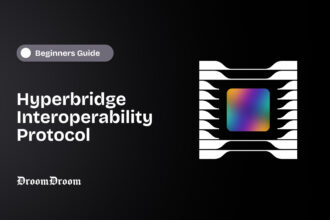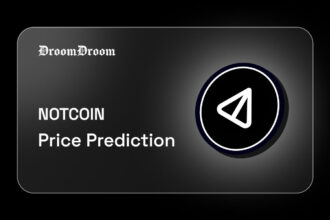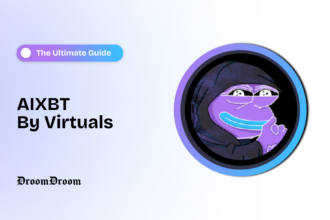Decentralized finance (DeFi) has positioned the cryptocurrency industry for significant adoption with its innovative approaches to solving financial problems. For instance, automated market makers (AMMs) have addressed issues associated with the order books of most traditional exchanges.
- What is a liquidity pool?
- Understanding Concentrated Liquidity Market Makers (CLMM)
- How Concentrated Liquidity Market Makers Works
- Benefits of Concentrated Liquidity Market Makers (CLMMs)
- Difference Between CLMM and AMMs
- CLMM Positioning: Comparing Stablecoins and Volatile Assets
- Factors to consider when using CLMM
- Concentrated Liquidity Over HODLing
- Conclusion
- Frequently Asked Questions (FAQs)
The most exciting aspect of DeFi is its continuous evolution; one such advancement is the introduction of Concentrated Liquidity Market Makers (CLMMs), which tackle problems like capital inefficiency often seen in AMMs.
The Concentrated Liquidity Market Maker (CLMM) model enhances capital efficiency within a liquidity pool by minimizing slippage. It allows liquidity providers to select their preferred price ranges, thereby increasing their potential yield.
This carefully researched article is intended to help you understand precisely what concentrated liquidity market maker (CLMM) are, how they function, what their benefits are, and what considerations to keep in mind when providing liquidity through CLMMs.
What is a liquidity pool?
Decentralized Exchanges (DEXs) have surged in popularity by supporting trading practices and generating over $500 billion in volume. They have achieved this without relying on intermediaries and by introducing innovative market designs that allow traders to swap tokens directly from a collective reserve known as a liquidity pool.
To understand this concept, one must first understand what a liquidity pool is within the context of a DEX. A liquidity pool is essentially a collection of cryptocurrencies that is crowdsourced and governed by a smart contract.
It serves as a digital repository of tokens or cryptocurrencies within a DEX, providing a mechanism for investors or contributors to earn passive income. They do this by pooling their assets, which in turn enables the exchange to facilitate trades.
Despite the term ‘locked away,’ liquidity is still accessible to buyers and sellers. Instead of depending on traditional market-making mechanisms, Automated Market Makers (AMMs) offer an automatic and permissionless method for users to exchange their tokens. AMMs utilize algorithms and pricing formulas to determine token prices based on the proportion of assets in the pools.
Models like these provide liquidity and enable the trading of tokens across various price ranges. However, slippage may occur if there is a discrepancy in liquidity levels between two tokens.
For instance, if Token A has low liquidity, its price will be higher at the time of trade execution. This phenomenon is known as providing passive liquidity because liquidity providers contribute liquidity uniformly across all price levels.
Launched in 2018, Uniswap was the first Automated Market Maker (AMM), and it operates on the formula X x Y= K to facilitate trades. In this formula, x and y represent the quantities of Token A and Token B, respectively, while k is a constant. This relationship dictates the quantity of Token A that can be obtained in exchange for Token B, accounting that the values of the two tokens are not equivalent.
To illustrate this, swapping $1000 USDT for DAI tokens when DAI is priced at $5 should yield a different outcome depending on the amount of liquidity in the pool. If the pool contains sufficient USDT at that price level, you will trade $1000 USDT for 200 DAI tokens, not including trading fees.
Conversely, if there were fewer than one thousand USDT available in the liquidity pool, the AMM would adjust to a price higher than the initial spot price. Meaning you would receive fewer than 200 DAI tokens.
This leads to an inefficient utilization of pooled assets. Because the liquidity is distributed uniformly across the entire price spectrum — from zero to infinity — some tokens may remain underutilized for their intended purpose. Only a fraction of the liquidity in the pool is actively used, while a significant portion stays idle.
To improve passive earnings, a liquidity provider must supply more liquidity, ensuring their tokens are utilized more frequently. The more liquidity one contributes, the greater the potential for earning passive income. Also, a DEX might retain a large amount of liquidity to support a relatively small volume of trades.
Understanding Concentrated Liquidity Market Makers (CLMM)
A Concentrated Liquidity Market Maker (CLMM) is a liquidity model that allows liquidity providers (LPs) to allocate their tokens within a selected price range where they will be actively used. Instead of distributing liquidity evenly across an infinite range as in traditional Automated Market Makers (AMMs), CLMMs allow for the pooled funds to be utilized more efficiently within the market or exchange.
Traders can select a specific price range for their tokens, focusing on liquidity where they anticipate market activity. However, using concentrated liquidity market makers (CLMMs) can result in potential losses similar to those associated with active market-making within a traditional order book market.
How Concentrated Liquidity Market Makers Works
Traders select a certain price range to provide liquidity and earn fees relative to their liquidity ratio at the current price. Once the price is within the selected position, LPs can earn. However, if the price leaves the selected price area, it could lead to a loss. With a range of $50 – $100, tokens are supplied in that range until they are withdrawn.
The tokens supplied are properly utilized since the liquidity range is not spread out from zero to infinity as in AMM but instead within a concentrated price range. It would have the same yield as the token supply at the same price range. The prince range is split into ‘ticks’ with each ‘tick’ representing values with equal distribution.
For instance, in a range of $30 – $50, there could be ticks for $31, $32 and so on. Liquidity providers can withdraw them and earn fees for supplying them as long as they are not outside the set range.
With the previous illustration using USDT and DAI tokens, $1000 USDT could yield a 100% position of the DAI tokens. Similar to the concept of liquidity staking, where tokens locked in proof-of-stake blockchains can be used as liquidity and for lending within a DEX, concentrated liquidity market maker (CLMM) is a next-generation optimized form of AMM that provides more flexibility and efficiency.
This model makes allocating liquidity more efficient and creates an advantage for liquidity providers and investors. It creates an opportunity to earn rewards with fewer tokens while minimizing slippage. Regardless of the liquidity flow — high or low — traders generate returns from their tokens by concentrating on a specific price range.
Benefits of Concentrated Liquidity Market Makers (CLMMs)
There are several advantages associated with using concentrated liquidity market makers (CLMMs) over traditional AMMs. Some of the benefits include:
- They help liquidity providers minimize instances of loss. Allowing LPs to select and limit their price range makes it possible to manage impermanent losses more effectively.
Learn more about impermanent losses in cryptocurrency and how they work in this DroomDroom article.
- They increase the efficiency of liquidity pools by leveraging concentration. This means that traders can allocate their funds to be most effective within a specific price range. With a concentrated pool of liquidity, there is an increased probability of earning returns on the assets.
- Concentrated liquidity market makers (CLMMs) offer customizable advantages to users. They are flexible, and LPs can change their strategies based on market conditions and design their preferred risk management approaches. Users can choose the price range at which they wish to provide liquidity and the fees they desire to receive in return.
Difference Between CLMM and AMMs
Traditional AMMs feature a token allocation scheme that evenly spreads liquidity across the entire price spectrum from zero to infinity, leading to slippage and low capital efficiency. Concentrated liquidity market makers (CLMMs) aim to correct this by targeting liquidity at specific price ranges to maximize efficiency and facilitate swaps. Examples of AMMs include SushiSwap, PancakeSwap, Uniswap V2, Balancer, and Curve.
Examples of platforms that use CLMM
Solana
As a public blockchain platform known for high-frequency trading, Solana has enhanced its core infrastructure to better facilitate trades using CLMMs.
Orca Whirlpools
On March 23, Orca launched its Whirlpools feature, aiming to reduce the high slippage resulting from its constant product AMMs. With the introduction of the Orcanauts Beta, Whirlpools focused on concentrating liquidity within certain price ranges to generate higher fees and rewards.
Uniswap V3
The CLMM feature was first introduced by Uniswap in May 2021, setting a precedent before Trader Joe’s launched its own version in August 2022. Concentrated liquidity accounted for up to 85% of the volume on Uniswap, allowing traders to earn more revenue with less capital and benefit from lower fees, among other advantages.
Since the Uniswap V3 license expired, several DeFi projects have been built around the model.
Cetus
After launching its version of the CLMM in January 2023, Cetus has posited that more advanced trading features could be developed atop its concentrated liquidity protocol.
MovEX
This community-backed platform is dedicated to providing an innovative trading and liquidity experience for its users. It was developed within the SUI ecosystem.
CLMM Positioning: Comparing Stablecoins and Volatile Assets
Stablecoins are cryptocurrencies that have their value pegged to a commodity or real-world asset. They are designed to be less volatile and maintain a relatively stable price, as opposed to other cryptocurrencies and altcoins. In the CLMM model, these assets exhibit low volatility and have more ticks within the selected range. This means that users can supply liquidity with greater precision since the price fluctuations are less severe, making it easier to concentrate liquidity with a lower risk of loss.
New to stablecoins? Then this comprehensive article by DroomDroom is for you.
The situation is different for more volatile assets. The ticks are spread farther apart than those for stablecoins, reflecting the broader price movements. The liquidity fees are also higher to compensate for the increased risk associated with price volatility. Just as with stablecoins, users can choose to provide liquidity beyond their current price position.
Factors to consider when using CLMM
Users have the ability to take multiple positions for the same token pair, thanks to the flexibility of CLMMs. This allows liquidity providers (LPs) to maximize the effectiveness of the liquidity they supply by establishing various price ranges for their positions.
Another impressive feature of CLMMs is that users would not have to worry about JIT (just-in-time liquidity) liquidity and it is available on Solana. JIT liquidity is a situation when liquidity providers spot a huge trade being carried out using CLMM and move in to supply liquidity. The supply takes place at an exact time and with high concentration to earn lots of fees.
In CLMMs, there is a need for constant engagement in the market. The LPs and traders must be active to keep their concentrated positions more secure and tight within the price range. They would have to closely monitor their positions and frequently adjust to set up new ranges once the price moves up to the set price boundaries.
Active management helps to reduce the chances of impermanent loss and zero fees. Also, it is less expensive to manage concentrated liquidity market makers (CLMMs). Unlike on Ethereum Virtual Machine, the execution fees cost less on Solana and do not have scalability issues.
Close-range liquidity supply earns more fees than liquidity spread out on a much larger scale. Concentrated ranges ensure effective liquidity deployment. However, to maintain the set position and supply liquidity requires active participation.
Concentrated Liquidity Over HODLing
There are many methods to earn and generate income in cryptocurrency, including HODLing, staking, and farming. HODL, which stands for “Hold On for Dear Life,” refers to the practice of holding onto cryptocurrency assets despite significant price fluctuations.
Studies such as this show that in the six months after its launch, liquidity providers on Uniswap V3 often lost more money than if they had simply HODLed their assets. However, another study indicates that active users can generate more revenue using concentrated liquidity than they would by HODLing.
This suggests the CLMM approach is not simply a “set and forget” strategy. It requires active management to adjust and maintain selected positions to earn more fees. While the CLMM adjustment benefits the community by introducing new DeFi services, it also improves capital efficiency by redistributing unused, locked-up value across the ecosystem.
Conclusion
Decentralized exchanges have revolutionized trading by removing the need for traditional intermediaries, allowing trades to be executed directly from a liquidity pool. While the initial promise of earning rewards from an even spread of liquidity — through automated market makers — was promising, it has proven to be less than perfect.
To optimize earnings, one would typically need to contribute a substantial amount of liquidity. However, market volatility raises the risks of incurring impermanent losses (ILs) and not earning fees.
Concentrated liquidity market makers (CLMMs) offer an alternative by allowing liquidity providers to focus a smaller amount of capital within a specific price range, potentially increasing earnings with less investment.
Managing CLMM positions can be time-intensive, requiring active involvement, manual management, and frequent rebalancing. Utilizing CLMM strategies with highly volatile tokens carries increased risk. Therefore, conducting thorough research and understanding the associated risks is crucial before engaging with CLMMs.
Frequently Asked Questions (FAQs)
What’s the difference between CLMM And Automated Market Maker?
Unlike AMM, where the liquidity in the pool is spread across a price range, which makes it inefficient, CLMM focuses on a selected price range and makes liquidity available. This results in better use of capital but leads to the risk of losses if prices move out of the selected range.
How Does CLMM Operate?
CLMM allows liquidity providers to select the price range they want to deposit their tokens. Once the token is within that price range, the token is used, and it starts earning fees in relation to the percentage of its liquidity in the pool. There’s a possibility of a loss when the token’s price isn’t within the price range.
How do CLMMs Handle Stablecoins And Volatile Assets Differently?
CLMM focused on stablecoins assets, which are less risky and have minimal issues of losses. Whereas other volatile assets such as Ether or MATIC losses are more likely. Using a price farther apart for these volatile assets is a good strategy.
What Should Be Considered Before Using CLMM?
There are several factors to take into consideration before using CLMM. You should have knowledge of the active management of the platform, close-range liquidity supply, the risk of providing liquidity for volatile crypto assets, and the requirement for frequent rebalancing.
Are There Any Risks Associated With Using CLMMs?
There are risks you face using CLMMs, including potential losses if prices move out of the selected range, frequent funds management, and difficulty in trading volatile cryptocurrency assets, among several others. Like always, carrying out your research is very important.



















